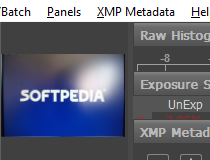


The first one is to improve exposure practice the second is to determine which highlights can be brought back safely. There are at least two practical reasons to investigate hidden exposure compensation in raw converters. We will be dealing in depth with Adobe’s converters, but the same method stands for any other converter. The goal of this article is to demonstrate how you can find the hidden exposure compensation your converter is applying to your raw files when opening them. Even avid ETTR practitioners can get into this trap, as they consider a histogram derived from the in-camera beautified conversion to be an indication of exposure.

In fact, the shot may be underexposed, sometimes by more than 1 stop, and the price is more noise, more artifacts, less resolution, and, ultimately, getting a new camera, which doesn’t really solve the problem. It often leaves a false impression of properly exposed raw, as we are so accustomed to mixing up exposure and brightness, judging former by the latter. The brightening of the mid-tones that is done behind the scenes is one of the most common approaches to add punch to a raw image. default preview (right, Adobe Camera Raw)


 0 kommentar(er)
0 kommentar(er)
